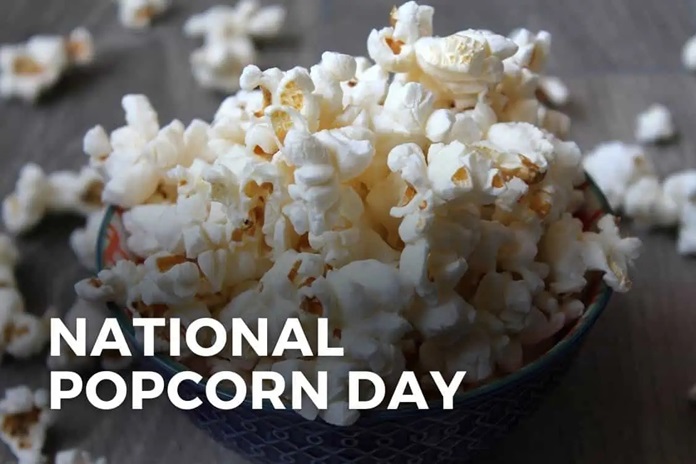National Popcorn Day is celebrated on January 19. Whether it’s Buttered, salted, kettled, or drizzled with caramel, popcorn is the perfect snack for any time and anywhere. It’s great on the go, in the theatre, or your living room! Just be ready to pick some of it out of your teeth.
History of National Popcorn Day
Did you know that the corn we consume and the corn we pop are two different varieties of maize?
The corn you’d find on your dinner table cannot pop at all! Zea mays everta is only one variety of corn that can become popcorn. Similarly, this type has small ears, and the kernels burst when exposed to dry heat.
In 1948, Herbert Dick and Earle Smith discovered small heads of Zea mays everta in the Bat Cave of west-central New Mexico.
The Bat Cave ears ranged from smaller than a penny to about two inches in size, with the oldest being around 4,000 years old.
Several popped kernels were also found, which have since been carbon-dated and shown to be approximately 5,600 years old. Similarly, there is evidence of early popcorn use in Peru, Mexico, and Guatemala, as well as other places in Central and South America.

Aztecs used popcorn to decorate their clothes, create ceremonial embellishments, and for nourishment. Native Americans have also been found to consume as well as utilize popcorn in their daily lives. In a cave in Utah, believed to have been inhabited by Pueblo Native Americans, popcorn has been found that dates back to over 1,000 years ago.
French explorers who travelled to the New World observed the Iroquois Natives in the Great Lakes region making popcorn. As colonists spread across North America, and the USA was established, many people adopted popcorn as a popular and healthy snack.
Also read, National Peking Duck Day – January 18, 2025
- You can cook popcorn in hot sand: In ancient Peru, people used a unique way to pop kernels with evenly distributed heat: hot sand. Peruvians would stir popcorn kernels into hot sand to help each kernel heat up and pop. Next time you’re on a hot beach give it a try!
- Nebraska grows the most popcorn: Nebraska produces more than a quarter of the nation’s popcorn, closely followed by neighbouring agricultural states including Ohio, Illinois, and Missouri. Opopop grows all of its popcorn on a top-secret farm in Nebraska using a proprietary popcorn kernel strain called XXXX.
- Unpopped popcorn kernels are called “spinsters” or “old maids.”: Unpopped popcorn kernels are known as “spinsters” or “old maids,” a term inspired by unmarried women of the past. These unpopped kernels lack enough moisture to create the steam needed for them to pop.
- The world’s largest ball of popcorn was 24 feet wide and 9,370 pounds: You can visit the world’s largest popcorn ball in Sac City, Iowa. Measuring 24 feet wide and weighing 9,370 pounds. To make it, 250 volunteers spent 12 hours and 40 minutes. They used 900 pounds of popcorn, 2,500 pounds of sugar, and 1,400 pounds of syrup. Unfortunately, it’s not edible!
- Popcorn can pop up to 30 times its size and up to 3 feet in the air: When a popcorn kernel pops, the moisture inside heats up causing the starch to gelatinize and expand into a fluffy delicious explosion as the outer shell bursts. This powerful burst can throw a popcorn kernel up to three feet in the air and pop it over 30 times the kernel’s original size in soft, puffy goodness.
Frequently Ask Question
How much popcorn do Americans consume annually?
Americans consume approximately 15 billion quarts of popcorn each year.
What is the ideal popping temperature for popcorn?
The ideal temperature for popping popcorn is around 400°F.
What varieties of corn can pop?
Only one variety of corn, known as Zea mays everta, is capable of popping.
You may also like to read, National Gourmet Coffee Day – January 18, 2025
